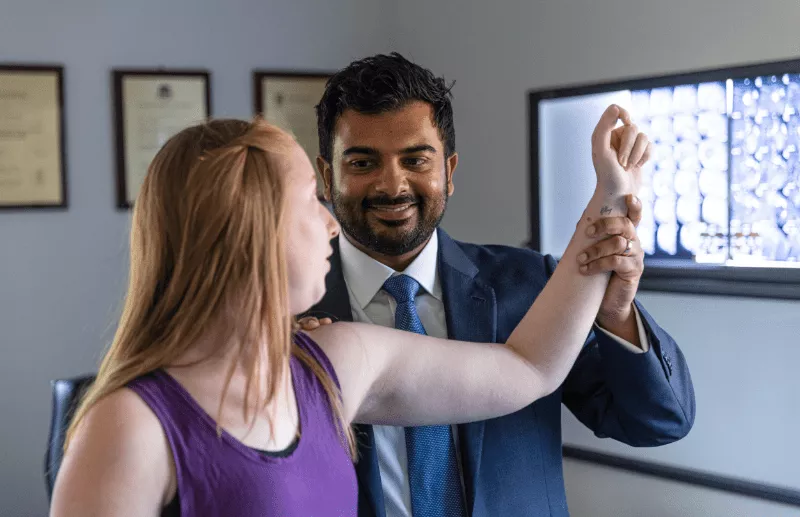Shoulder Dislocation / Instability Conditions
What is Shoulder Instability?
Shoulder instability is mostly a young person injury which results in the shoulder joint being unstable or loose. This occurs due to the capsule and ligaments to the shoulder being stretched or torn. You can have a fracture in association with a dislocation. This can be a frank dislocation or a subluxation (partial dislocation). The majority of these injuries are due to sports or recreational activities. Unfortunately, after a single traumatic dislocation it is very likely you will have recurrent dislocations, 90% in patients less than 20 years old.
What are the symptoms of Shoulder Instability?
Apart from the obvious shoulder dislocations or subluxations, patients may experience a feeling of instability or pain when performing certain activities or in certain positions.
How is Shoulder Instability diagnosed?
Shoulder instability diagnosis would involve a detailed history and examination focused on how unstable the shoulder is but also how “stretchy” your ligaments are. Radiological imaging would consist of a X-Ray, a MRI and sometimes a CT scan if a fracture was suspected. MRI scans generally highlight if you have torn the ligaments of the shoulder socket ie. labral tear.
Book an Appointment Today!
What are the risk factors for recurrent Shoulder Instability?
The risk factors for recurrent shoulder instability are primarily focus on age and activities. They include:
- Age <20
- Hyperlaxity of joints
- Competitive sports
- Contact sports
- Labral tear
- Fractures of the shoulder joint

How do you treat Shoulder Instability
Click here to view the treatment for Shoulder Instability
